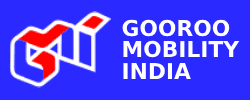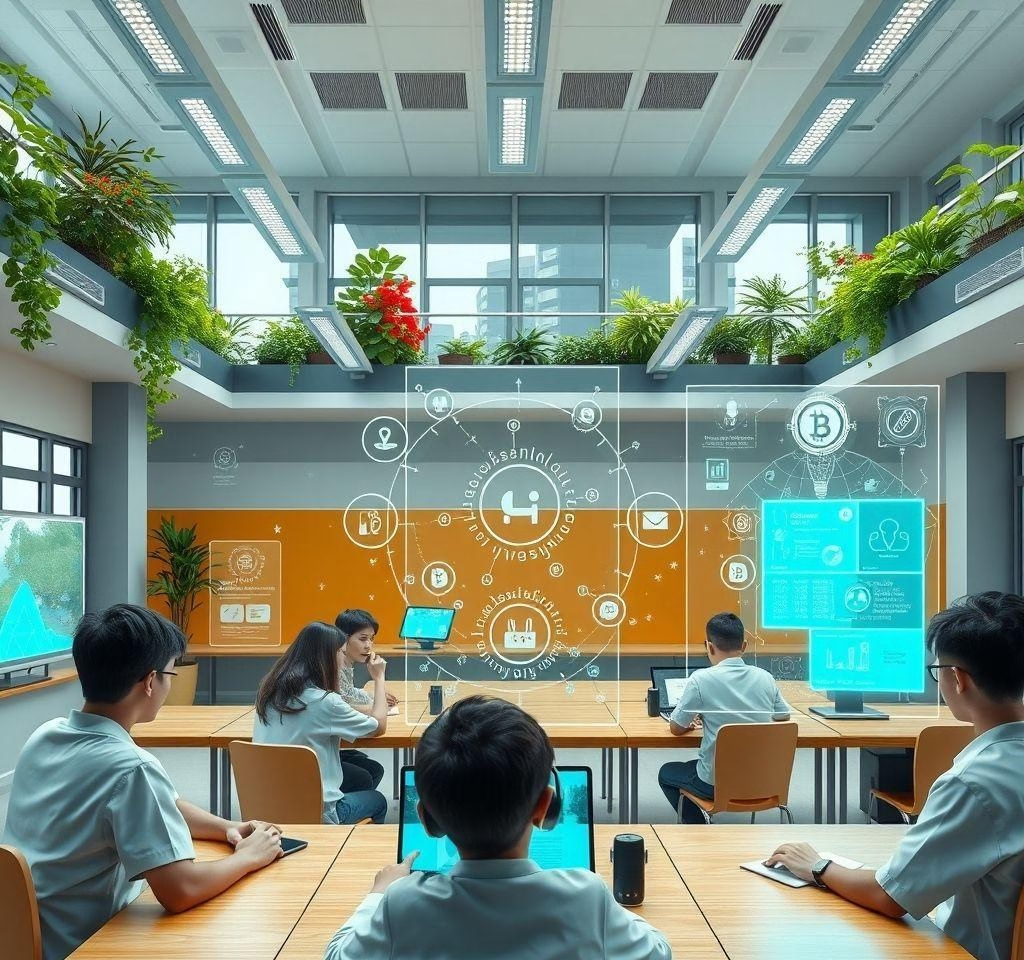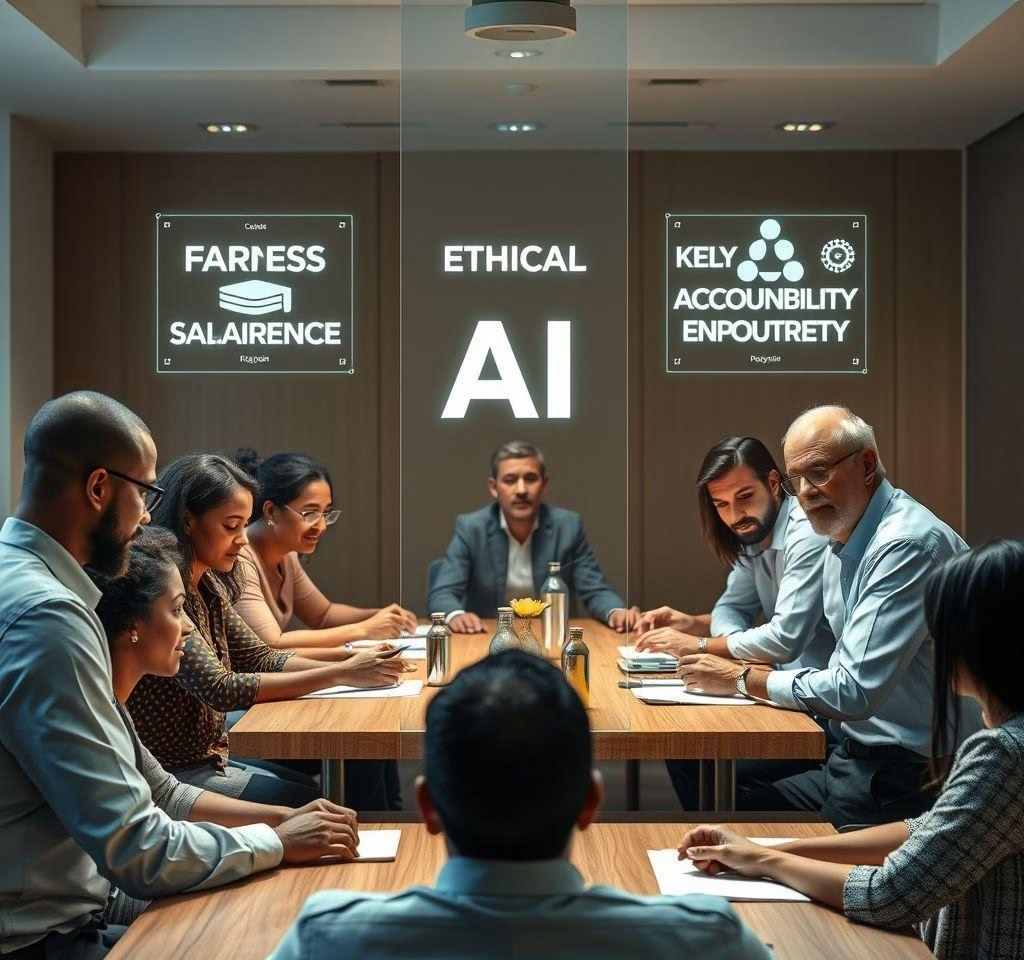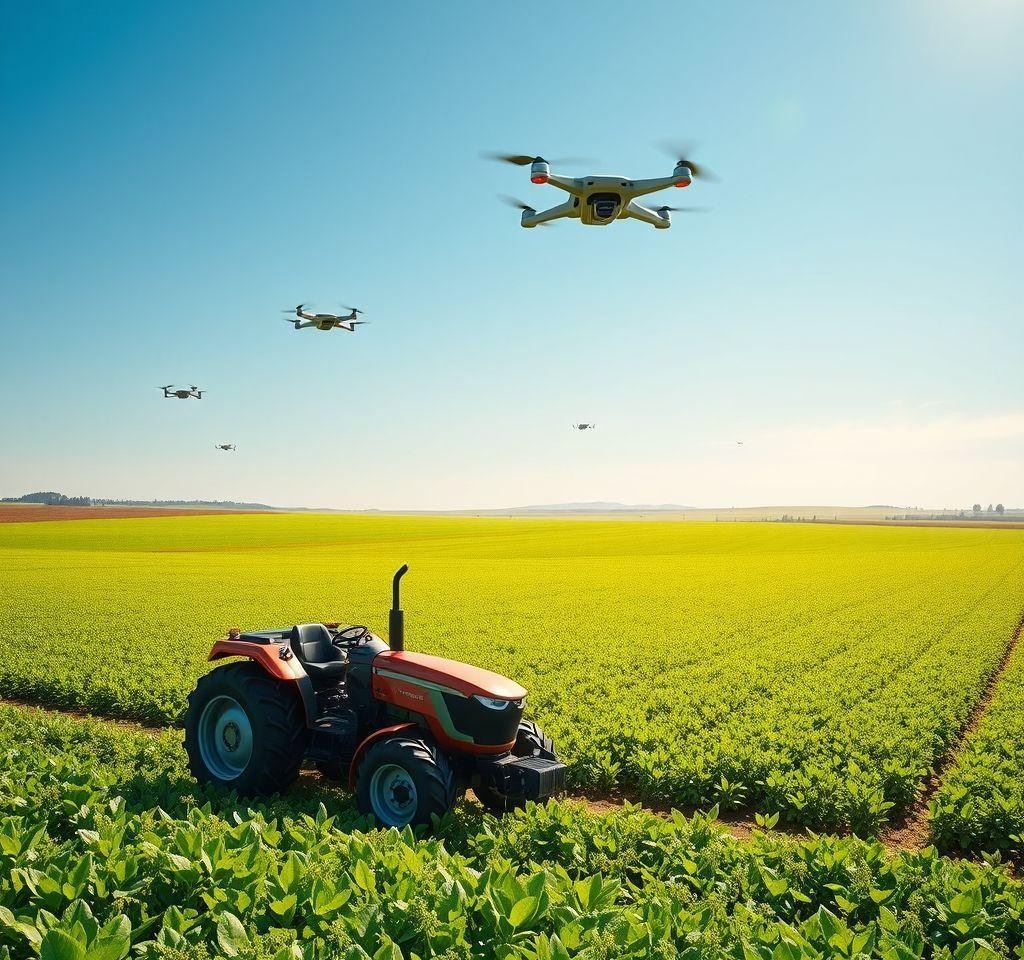Web 3.0 in Education: Revolutionizing Learning Through Decentralization
Education is undergoing a transformative shift with Web 3.0 technologies. This article explores how blockchain, AI, and decentralized networks are dismantling traditional learning barriers, enabling peer-to-peer knowledge exchange, and redefining academic ownership. Explore practical implementations, benefits, and challenges in creating equitable, scalable education systems.
The Foundation of Web 3.0 in Education
The core of Web 3.0 rests on three pillars: decentralization, blockchain technology, and artificial intelligence (AI). Decentralization shifts control from central entities to users, fostering a more democratic and equitable educational landscape. Blockchain ensures transparency, security, and immutability through distributed ledgers. This is crucial for verifying academic credentials and tracking learning progress. AI personalizes learning experiences, automates administrative tasks, and offers intelligent tutoring systems. These principles collectively reshape educational ecosystems.
Decentralization empowers learners by giving them ownership of their data and learning paths. Imagine a student choosing from various learning modules across different institutions, creating a personalized curriculum recognized universally via blockchain. Blockchain can secure NFT credentials, making them verifiable and resistant to fraud. AI algorithms can analyze a student’s learning style and recommend suitable resources. This creates adaptive learning environments.
DAOs could govern educational institutions. This allows stakeholders to participate in decision-making. This includes curriculum development and resource allocation. Web 3.0 enables creators to earn without middlemen. Consider a scenario where educators earn tokens for creating high-quality content, incentivizing contributions to the learning community. The convergence of these technologies leads to a more transparent, efficient, and learner-centric educational paradigm.
Architecture of Decentralized Learning Platforms
The core of Web 3.0 rests on three pillars: decentralization, blockchain technology, and artificial intelligence (AI). Decentralization shifts control from central entities to users, fostering a more democratic and equitable educational landscape. Blockchain ensures transparency, security, and immutability through distributed ledgers. This is crucial for verifying academic credentials and tracking learning progress. AI personalizes learning experiences, automates administrative tasks, and offers intelligent tutoring systems. These principles collectively reshape educational ecosystems.
Decentralization empowers learners by giving them ownership of their data and learning paths. Imagine a student choosing from various learning modules across different institutions, creating a personalized curriculum recognized universally via blockchain. Blockchain can secure NFT credentials, making them verifiable and resistant to fraud. AI algorithms can analyze a student’s learning style and recommend suitable resources. This creates adaptive learning environments.
DAOs could govern educational institutions. This allows stakeholders to participate in decision-making. This includes curriculum development and resource allocation. Web 3.0 enables creators to earn without middlemen. Consider a scenario where educators earn tokens for creating high-quality content, incentivizing contributions to the learning community. The convergence of these technologies leads to a more transparent, efficient, and learner-centric educational paradigm.
Economic and Inclusivity Benefits
The core of Web 3.0 rests on three pillars: decentralization, blockchain technology, and artificial intelligence (AI). Decentralization shifts control from central entities to users, fostering a more democratic and equitable educational landscape. Blockchain ensures transparency, security, and immutability through distributed ledgers. This is crucial for verifying academic credentials and tracking learning progress. AI personalizes learning experiences, automates administrative tasks, and offers intelligent tutoring systems. These principles collectively reshape educational ecosystems.
Decentralization empowers learners by giving them ownership of their data and learning paths. Imagine a student choosing from various learning modules across different institutions, creating a personalized curriculum recognized universally via blockchain. Blockchain can secure NFT credentials, making them verifiable and resistant to fraud. AI algorithms can analyze a student’s learning style and recommend suitable resources. This creates adaptive learning environments.
DAOs could govern educational institutions. This allows stakeholders to participate in decision-making. This includes curriculum development and resource allocation. Web 3.0 enables creators to earn without middlemen. Consider a scenario where educators earn tokens for creating high-quality content, incentivizing contributions to the learning community. The convergence of these technologies leads to a more transparent, efficient, and learner-centric educational paradigm.
Overcoming Adoption Barriers
The core of Web 3.0 rests on three pillars: decentralization, blockchain technology, and artificial intelligence (AI). Decentralization shifts control from central entities to users, fostering a more democratic and equitable educational landscape. Blockchain ensures transparency, security, and immutability through distributed ledgers. This is crucial for verifying academic credentials and tracking learning progress. AI personalizes learning experiences, automates administrative tasks, and offers intelligent tutoring systems. These principles collectively reshape educational ecosystems.
Decentralization empowers learners by giving them ownership of their data and learning paths. Imagine a student choosing from various learning modules across different institutions, creating a personalized curriculum recognized universally via blockchain. Blockchain can secure NFT credentials, making them verifiable and resistant to fraud. AI algorithms can analyze a student’s learning style and recommend suitable resources. This creates adaptive learning environments.
DAOs could govern educational institutions. This allows stakeholders to participate in decision-making. This includes curriculum development and resource allocation. Web 3.0 enables creators to earn without middlemen. Consider a scenario where educators earn tokens for creating high-quality content, incentivizing contributions to the learning community. The convergence of these technologies leads to a more transparent, efficient, and learner-centric educational paradigm.
Vision for 2030: A Web 3.0-Driven Education Future
The core of Web 3.0 rests on three pillars: decentralization, blockchain technology, and artificial intelligence (AI). Decentralization shifts control from central entities to users, fostering a more democratic and equitable educational landscape. Blockchain ensures transparency, security, and immutability through distributed ledgers. This is crucial for verifying academic credentials and tracking learning progress. AI personalizes learning experiences, automates administrative tasks, and offers intelligent tutoring systems. These principles collectively reshape educational ecosystems.
Decentralization empowers learners by giving them ownership of their data and learning paths. Imagine a student choosing from various learning modules across different institutions, creating a personalized curriculum recognized universally via blockchain. Blockchain can secure NFT credentials, making them verifiable and resistant to fraud. AI algorithms can analyze a student’s learning style and recommend suitable resources. This creates adaptive learning environments.
DAOs could govern educational institutions. This allows stakeholders to participate in decision-making. This includes curriculum development and resource allocation. Web 3.0 enables creators to earn without middlemen. Consider a scenario where educators earn tokens for creating high-quality content, incentivizing contributions to the learning community. The convergence of these technologies leads to a more transparent, efficient, and learner-centric educational paradigm.
The Foundation of Web 3.0 in Education
Decentralized learning platforms leverage blockchain to foster peer-to-peer learning. They also utilize decentralized databases for secure data storage. Smart contracts automate credentialing processes. This architecture removes intermediaries. It also ensures transparent and verifiable educational records. These platforms support:
- Autonomous learning networks: Learners connect directly with educators and resources. This is without central authority.
- Immutable academic records: Achievements are permanently recorded on the blockchain. This prevents fraud and enhances trust.
Blockchain-based platforms enable direct interactions between learners and educators. Imagine a student earning micro-credentials validated by smart contracts upon completing specific skills. These credentials become part of their permanent, verifiable learning record. Decentralized databases ensure data privacy and security. Only authorized parties can access learner information.
Smart contracts automate tasks such as grading and certification. This reduces administrative overhead and ensures fairness. These platforms facilitate global collaboration. Learners and educators from different regions can connect and share knowledge seamlessly. Smart contracts evolution is key to this architecture. This fosters a more inclusive and accessible educational ecosystem.
Architecture of Decentralized Learning Platforms
Decentralized learning platforms leverage blockchain to foster peer-to-peer learning. They also utilize decentralized databases for secure data storage. Smart contracts automate credentialing processes. This architecture removes intermediaries. It also ensures transparent and verifiable educational records. These platforms support:
- Autonomous learning networks: Learners connect directly with educators and resources. This is without central authority.
- Immutable academic records: Achievements are permanently recorded on the blockchain. This prevents fraud and enhances trust.
Blockchain-based platforms enable direct interactions between learners and educators. Imagine a student earning micro-credentials validated by smart contracts upon completing specific skills. These credentials become part of their permanent, verifiable learning record. Decentralized databases ensure data privacy and security. Only authorized parties can access learner information.
Smart contracts automate tasks such as grading and certification. This reduces administrative overhead and ensures fairness. These platforms facilitate global collaboration. Learners and educators from different regions can connect and share knowledge seamlessly. Smart contracts evolution is key to this architecture. This fosters a more inclusive and accessible educational ecosystem.
Economic and Inclusivity Benefits
Decentralized learning platforms leverage blockchain to foster peer-to-peer learning. They also utilize decentralized databases for secure data storage. Smart contracts automate credentialing processes. This architecture removes intermediaries. It also ensures transparent and verifiable educational records. These platforms support:
- Autonomous learning networks: Learners connect directly with educators and resources. This is without central authority.
- Immutable academic records: Achievements are permanently recorded on the blockchain. This prevents fraud and enhances trust.
Blockchain-based platforms enable direct interactions between learners and educators. Imagine a student earning micro-credentials validated by smart contracts upon completing specific skills. These credentials become part of their permanent, verifiable learning record. Decentralized databases ensure data privacy and security. Only authorized parties can access learner information.
Smart contracts automate tasks such as grading and certification. This reduces administrative overhead and ensures fairness. These platforms facilitate global collaboration. Learners and educators from different regions can connect and share knowledge seamlessly. Smart contracts evolution is key to this architecture. This fosters a more inclusive and accessible educational ecosystem.
Overcoming Adoption Barriers
Decentralized learning platforms leverage blockchain to foster peer-to-peer learning. They also utilize decentralized databases for secure data storage. Smart contracts automate credentialing processes. This architecture removes intermediaries. It also ensures transparent and verifiable educational records. These platforms support:
- Autonomous learning networks: Learners connect directly with educators and resources. This is without central authority.
- Immutable academic records: Achievements are permanently recorded on the blockchain. This prevents fraud and enhances trust.
Blockchain-based platforms enable direct interactions between learners and educators. Imagine a student earning micro-credentials validated by smart contracts upon completing specific skills. These credentials become part of their permanent, verifiable learning record. Decentralized databases ensure data privacy and security. Only authorized parties can access learner information.
Smart contracts automate tasks such as grading and certification. This reduces administrative overhead and ensures fairness. These platforms facilitate global collaboration. Learners and educators from different regions can connect and share knowledge seamlessly. Smart contracts evolution is key to this architecture. This fosters a more inclusive and accessible educational ecosystem.
Vision for 2030: A Web 3.0-Driven Education Future
Decentralized learning platforms leverage blockchain to foster peer-to-peer learning. They also utilize decentralized databases for secure data storage. Smart contracts automate credentialing processes. This architecture removes intermediaries. It also ensures transparent and verifiable educational records. These platforms support:
- Autonomous learning networks: Learners connect directly with educators and resources. This is without central authority.
- Immutable academic records: Achievements are permanently recorded on the blockchain. This prevents fraud and enhances trust.
Blockchain-based platforms enable direct interactions between learners and educators. Imagine a student earning micro-credentials validated by smart contracts upon completing specific skills. These credentials become part of their permanent, verifiable learning record. Decentralized databases ensure data privacy and security. Only authorized parties can access learner information.
Smart contracts automate tasks such as grading and certification. This reduces administrative overhead and ensures fairness. These platforms facilitate global collaboration. Learners and educators from different regions can connect and share knowledge seamlessly. Smart contracts evolution is key to this architecture. This fosters a more inclusive and accessible educational ecosystem.
The Foundation of Web 3.0 in Education
Web 3.0 education platforms offer significant economic and inclusivity benefits. Tokenomics can reduce costs by up to 90% by eliminating intermediaries and streamlining operations. Traditional systems often involve high tuition fees and administrative overhead. Global access to resources democratizes education. Learners can access courses and materials regardless of location or socioeconomic status.
Data ownership empowers students. They control their learning data and can monetize their achievements. In contrast, traditional systems often treat student data as institutional property. Tokenized incentives can motivate learners and reward educators. This creates a vibrant and self-sustaining learning ecosystem.
Decentralized platforms enable micro-scholarships and crowdfunding. This allows individuals to support learners directly. This also promotes educational equity. AI-driven tools can provide personalized learning recommendations. This helps students optimize their learning paths. Web 3.0 empowers creators. This creates a more accessible and affordable education for all.
Architecture of Decentralized Learning Platforms
Web 3.0 education platforms offer significant economic and inclusivity benefits. Tokenomics can reduce costs by up to 90% by eliminating intermediaries and streamlining operations. Traditional systems often involve high tuition fees and administrative overhead. Global access to resources democratizes education. Learners can access courses and materials regardless of location or socioeconomic status.
Data ownership empowers students. They control their learning data and can monetize their achievements. In contrast, traditional systems often treat student data as institutional property. Tokenized incentives can motivate learners and reward educators. This creates a vibrant and self-sustaining learning ecosystem.
Decentralized platforms enable micro-scholarships and crowdfunding. This allows individuals to support learners directly. This also promotes educational equity. AI-driven tools can provide personalized learning recommendations. This helps students optimize their learning paths. Web 3.0 empowers creators. This creates a more accessible and affordable education for all.
Economic and Inclusivity Benefits
Web 3.0 education platforms offer significant economic and inclusivity benefits. Tokenomics can reduce costs by up to 90% by eliminating intermediaries and streamlining operations. Traditional systems often involve high tuition fees and administrative overhead. Global access to resources democratizes education. Learners can access courses and materials regardless of location or socioeconomic status.
Data ownership empowers students. They control their learning data and can monetize their achievements. In contrast, traditional systems often treat student data as institutional property. Tokenized incentives can motivate learners and reward educators. This creates a vibrant and self-sustaining learning ecosystem.
Decentralized platforms enable micro-scholarships and crowdfunding. This allows individuals to support learners directly. This also promotes educational equity. AI-driven tools can provide personalized learning recommendations. This helps students optimize their learning paths. Web 3.0 empowers creators. This creates a more accessible and affordable education for all.
Overcoming Adoption Barriers
Web 3.0 education platforms offer significant economic and inclusivity benefits. Tokenomics can reduce costs by up to 90% by eliminating intermediaries and streamlining operations. Traditional systems often involve high tuition fees and administrative overhead. Global access to resources democratizes education. Learners can access courses and materials regardless of location or socioeconomic status.
Data ownership empowers students. They control their learning data and can monetize their achievements. In contrast, traditional systems often treat student data as institutional property. Tokenized incentives can motivate learners and reward educators. This creates a vibrant and self-sustaining learning ecosystem.
Decentralized platforms enable micro-scholarships and crowdfunding. This allows individuals to support learners directly. This also promotes educational equity. AI-driven tools can provide personalized learning recommendations. This helps students optimize their learning paths. Web 3.0 empowers creators. This creates a more accessible and affordable education for all.
Vision for 2030: A Web 3.0-Driven Education Future
Web 3.0 education platforms offer significant economic and inclusivity benefits. Tokenomics can reduce costs by up to 90% by eliminating intermediaries and streamlining operations. Traditional systems often involve high tuition fees and administrative overhead. Global access to resources democratizes education. Learners can access courses and materials regardless of location or socioeconomic status.
Data ownership empowers students. They control their learning data and can monetize their achievements. In contrast, traditional systems often treat student data as institutional property. Tokenized incentives can motivate learners and reward educators. This creates a vibrant and self-sustaining learning ecosystem.
Decentralized platforms enable micro-scholarships and crowdfunding. This allows individuals to support learners directly. This also promotes educational equity. AI-driven tools can provide personalized learning recommendations. This helps students optimize their learning paths. Web 3.0 empowers creators. This creates a more accessible and affordable education for all.
The Foundation of Web 3.0 in Education
Adoption of Web 3.0 education faces hurdles like institutional resistance and technical literacy gaps. Interoperability between different platforms is also a concern. Hybrid models can ease the transition. These models integrate Web 3.0 elements into existing systems. Partnerships with EdTech firms can provide the necessary expertise and resources.
Addressing technical literacy requires comprehensive training programs. These programs should target educators and learners. Imagine a university gradually incorporating blockchain-based credentialing alongside its traditional diploma system. This reduces disruption and builds confidence.
Open standards and protocols are crucial for interoperability. This ensures seamless data exchange between platforms. Collaboration between institutions and developers can foster these standards. Overcoming these barriers unlocks the transformative potential of Web 3.0 in education. Web 3.0’s future depends on addressing these challenges proactively. This ensures a smooth transition.
Architecture of Decentralized Learning Platforms
Adoption of Web 3.0 education faces hurdles like institutional resistance and technical literacy gaps. Interoperability between different platforms is also a concern. Hybrid models can ease the transition. These models integrate Web 3.0 elements into existing systems. Partnerships with EdTech firms can provide the necessary expertise and resources.
Addressing technical literacy requires comprehensive training programs. These programs should target educators and learners. Imagine a university gradually incorporating blockchain-based credentialing alongside its traditional diploma system. This reduces disruption and builds confidence.
Open standards and protocols are crucial for interoperability. This ensures seamless data exchange between platforms. Collaboration between institutions and developers can foster these standards. Overcoming these barriers unlocks the transformative potential of Web 3.0 in education. Web 3.0’s future depends on addressing these challenges proactively. This ensures a smooth transition.
Economic and Inclusivity Benefits
Adoption of Web 3.0 education faces hurdles like institutional resistance and technical literacy gaps. Interoperability between different platforms is also a concern. Hybrid models can ease the transition. These models integrate Web 3.0 elements into existing systems. Partnerships with EdTech firms can provide the necessary expertise and resources.
Addressing technical literacy requires comprehensive training programs. These programs should target educators and learners. Imagine a university gradually incorporating blockchain-based credentialing alongside its traditional diploma system. This reduces disruption and builds confidence.
Open standards and protocols are crucial for interoperability. This ensures seamless data exchange between platforms. Collaboration between institutions and developers can foster these standards. Overcoming these barriers unlocks the transformative potential of Web 3.0 in education. Web 3.0’s future depends on addressing these challenges proactively. This ensures a smooth transition.
Overcoming Adoption Barriers
Adoption of Web 3.0 education faces hurdles like institutional resistance and technical literacy gaps. Interoperability between different platforms is also a concern. Hybrid models can ease the transition. These models integrate Web 3.0 elements into existing systems. Partnerships with EdTech firms can provide the necessary expertise and resources.
Addressing technical literacy requires comprehensive training programs. These programs should target educators and learners. Imagine a university gradually incorporating blockchain-based credentialing alongside its traditional diploma system. This reduces disruption and builds confidence.
Open standards and protocols are crucial for interoperability. This ensures seamless data exchange between platforms. Collaboration between institutions and developers can foster these standards. Overcoming these barriers unlocks the transformative potential of Web 3.0 in education. Web 3.0’s future depends on addressing these challenges proactively. This ensures a smooth transition.
Vision for 2030: A Web 3.0-Driven Education Future
Adoption of Web 3.0 education faces hurdles like institutional resistance and technical literacy gaps. Interoperability between different platforms is also a concern. Hybrid models can ease the transition. These models integrate Web 3.0 elements into existing systems. Partnerships with EdTech firms can provide the necessary expertise and resources.
Addressing technical literacy requires comprehensive training programs. These programs should target educators and learners. Imagine a university gradually incorporating blockchain-based credentialing alongside its traditional diploma system. This reduces disruption and builds confidence.
Open standards and protocols are crucial for interoperability. This ensures seamless data exchange between platforms. Collaboration between institutions and developers can foster these standards. Overcoming these barriers unlocks the transformative potential of Web 3.0 in education. Web 3.0’s future depends on addressing these challenges proactively. This ensures a smooth transition.
The Foundation of Web 3.0 in Education
Envision a 2030 where education is revolutionized by Web 3.0. Decentralized degrees become the norm. These are tailored by learners and recognized globally. AI tutors offer personalized guidance. They adapt to individual learning styles. Metaverse classrooms provide immersive learning experiences. Students from around the world collaborate in real-time.
Global collaboration networks connect learners and educators. They transcend geographical boundaries. This fosters a more interconnected and inclusive world. Blockchain ensures secure and verifiable credentials. This enhances trust and transparency. Lifelong learning becomes seamless. Individuals continuously update their skills through decentralized platforms.
AI-driven career guidance systems help learners identify future job opportunities. They align their education accordingly. This leads to a more skilled and adaptable workforce. The shift towards decentralized education empowers individuals. It gives them control over their learning journey. This creates a more equitable and prosperous society. AI job roles and skills will be crucial in this future.
Architecture of Decentralized Learning Platforms
Envision a 2030 where education is revolutionized by Web 3.0. Decentralized degrees become the norm. These are tailored by learners and recognized globally. AI tutors offer personalized guidance. They adapt to individual learning styles. Metaverse classrooms provide immersive learning experiences. Students from around the world collaborate in real-time.
Global collaboration networks connect learners and educators. They transcend geographical boundaries. This fosters a more interconnected and inclusive world. Blockchain ensures secure and verifiable credentials. This enhances trust and transparency. Lifelong learning becomes seamless. Individuals continuously update their skills through decentralized platforms.
AI-driven career guidance systems help learners identify future job opportunities. They align their education accordingly. This leads to a more skilled and adaptable workforce. The shift towards decentralized education empowers individuals. It gives them control over their learning journey. This creates a more equitable and prosperous society. AI job roles and skills will be crucial in this future.
Economic and Inclusivity Benefits
Envision a 2030 where education is revolutionized by Web 3.0. Decentralized degrees become the norm. These are tailored by learners and recognized globally. AI tutors offer personalized guidance. They adapt to individual learning styles. Metaverse classrooms provide immersive learning experiences. Students from around the world collaborate in real-time.
Global collaboration networks connect learners and educators. They transcend geographical boundaries. This fosters a more interconnected and inclusive world. Blockchain ensures secure and verifiable credentials. This enhances trust and transparency. Lifelong learning becomes seamless. Individuals continuously update their skills through decentralized platforms.
AI-driven career guidance systems help learners identify future job opportunities. They align their education accordingly. This leads to a more skilled and adaptable workforce. The shift towards decentralized education empowers individuals. It gives them control over their learning journey. This creates a more equitable and prosperous society. AI job roles and skills will be crucial in this future.
Overcoming Adoption Barriers
Envision a 2030 where education is revolutionized by Web 3.0. Decentralized degrees become the norm. These are tailored by learners and recognized globally. AI tutors offer personalized guidance. They adapt to individual learning styles. Metaverse classrooms provide immersive learning experiences. Students from around the world collaborate in real-time.
Global collaboration networks connect learners and educators. They transcend geographical boundaries. This fosters a more interconnected and inclusive world. Blockchain ensures secure and verifiable credentials. This enhances trust and transparency. Lifelong learning becomes seamless. Individuals continuously update their skills through decentralized platforms.
AI-driven career guidance systems help learners identify future job opportunities. They align their education accordingly. This leads to a more skilled and adaptable workforce. The shift towards decentralized education empowers individuals. It gives them control over their learning journey. This creates a more equitable and prosperous society. AI job roles and skills will be crucial in this future.
Vision for 2030: A Web 3.0-Driven Education Future
Envision a 2030 where education is revolutionized by Web 3.0. Decentralized degrees become the norm. These are tailored by learners and recognized globally. AI tutors offer personalized guidance. They adapt to individual learning styles. Metaverse classrooms provide immersive learning experiences. Students from around the world collaborate in real-time.
Global collaboration networks connect learners and educators. They transcend geographical boundaries. This fosters a more interconnected and inclusive world. Blockchain ensures secure and verifiable credentials. This enhances trust and transparency. Lifelong learning becomes seamless. Individuals continuously update their skills through decentralized platforms.
AI-driven career guidance systems help learners identify future job opportunities. They align their education accordingly. This leads to a more skilled and adaptable workforce. The shift towards decentralized education empowers individuals. It gives them control over their learning journey. This creates a more equitable and prosperous society. AI job roles and skills will be crucial in this future.
Final Words
Decentralized learning platforms powered by Web 3.0 offer unprecedented opportunities for equitable access, data sovereignty, and innovation. Institutions must collaborate on governance frameworks to ensure scalable adoption. Educators and policymakers must prioritize interoperability and accessibility to harness this revolution’s full potential.




